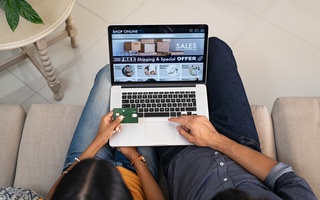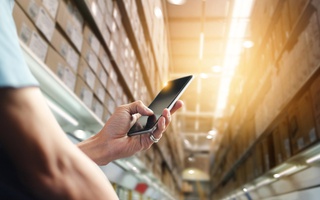In shoe and clothing retail, the main distribution channel is still brick-and-mortar shop: people love to go shopping, look at the goods live, try them on, and buy. This traditional model is very difficult to be outperformed and unlikely to be ever outcompeted, but online sales can complement it very well.
In the age of digital transformation, it is no longer enough to have an online resource to place orders. Do you want efficiency and sales growth? Then you need a unified omnichannel system through which the client could obtain information on the availability and quality of goods, quickly order and receive them.
Unreal shopping
The most exciting thing about online shopping is that it can be done at any time of the day or night and you do not have to go anywhere. We save time and money on the way to the mall. People also have persistent beliefs regarding the product range: they think that on the Internet, the assortment of goods is wider, and prices are lower than in stores. But this is only the first impression.
The conversion on the Internet seems tremendous…
But in reality, purchases are NOT made online! That’s mostly because customers are not ready to wait, cannot find their size or do not have the opportunity to try and evaluate the goods personally. Remember that we are talking about clothes and shoes.
Another reason is insufficient functionality of an online store. If it does not support quickly checking the availability of goods in a particular offline store or reserving the right product for in-store purchase (“I reserve my size in the nearest store—come and try on—buy”), you can lose customers.
Everybody loves stores
Studies show that online marketplaces increase sales in conventional stores and vice versa. This is a single synergetic system, and if it is streamlined, it can provide great customer experience and open excellent prospects for the business. At the same time, the role of brick-and-mortar stores is transforming: people do not come here to buy, but to try on, consider (the “showroom” model), just wander, talk to sellers, and evaluate the interior (spend some time for free and learn something new), and also pick up the goods ordered online.
Omnichanneling
The multi-channel sales model works if it can bring the customer an equally good experience and opportunities at all stages of interaction with the seller and the product. The whole communication cycle should be of the same quality regardless of the sales channel chosen by the customer. Via any channel—phone, chat, online store, conventional store—customers should be able to receive information quickly and buy products at the same price, independently or with the help of salespeople. Besides, ideally, they should feel that the retailer already knows their needs or can predict them and offer a compelling personal bargain or a promo.
People are so fond of getting a positive user experience that, once they have tried the “top-notch” service, they begin to expect it from everyone and always. Having experienced a slight inconvenience in the buying process, customers will not hesitate to go to another store, since they always have this opportunity. The omnichannel approach raises the bar from year to year: 2-3 years ago you were not allowed to try on a thing delivered by a courier, and now many expect it as a service standard—as well as free delivery.
Components of an omnichannel model
- Website and online store. Here the buyer can look through the assortment, find out what and in what size and quantity is available in traditional stores, buy goods or book them in a store, order delivery, try-on, or pickup. Delivery and try-on should ideally be free.
- Consulting by phone. Ideally, a free call center, the operator of which recognizes the client by phone number.
- Branded mobile application. It should have everything: the entire product range, addresses, orders, reservation, and news!
- Chat in Telegram. Few people like phone talks but many love chatting in popular instant messengers. If you can quickly provide information on the availability of goods and sizes, customers will be grateful.
- Trained sellers and couriers. Employees are also an important part of the omnichannel model. Give your salespeople payment terminals and tablets for quicker consulting, explain to couriers how to answer the questions during the trying-on or buying like “is there a similar jacket in cucumber colors?” Hint: the perfect courier will redirect to the call center, chat, or even dial the right number personally and hand over the phone. Motivate your employees to know how to provide proper service.
- Customer pickup point (with or without fitting rooms).
- Trading room with proper equipment. Your stores should have Wi-Fi: it makes shopping much more attractive and is an excellent marketing tool. Offer your customers a self-pay service so they won’t have to stand in line at the cashier counter.
- Focus on feedback collection and using it as an additional sales channel. Any feedback (online and offline) is priceless. Good reviews will attract new customers and increase profit. The bad ones will help you eliminate the drawbacks. Collect reviews and comments, communicate with those who give feedback, design a separate motivation system for them, and get an additional loyal audience.
Technological foundation
The most suitable solutions for the omnichannel sales system depend on the technologies already used in the company and their integration capabilities. Properly configured ERP solutions, real-time goods accounting systems, 1C products, logistics and warehouse management systems can run like clockwork in the back office, as well as in points of sales and all trade network facilities. Soon, even in large retail stores, each sales item will have a specific status updated every minute: available in a store, stored in a warehouse, delivered by a courier, etc. Some retailers have already partially implemented this model—they pay great attention to registering the so-called “temporary states” of the product (such as fitting) and perform product write-off instantly, not at the end of the shift.









